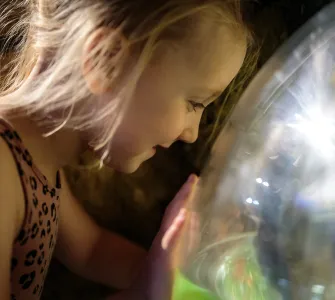The rare Crystal Moss animal (Lophopus crystallinus) is an invertebrate which has seen a decline in the UK, namely due to a loss of their habitats. It is one of 11 species of Bryozoa found in the UK. Bryozoans are tiny, filter feeding animals which in their adult form are immobile, living glued to the sides of boulders, rocks or other surfaces.
The Crystal Moss animal has been recorded at a blow well – a habitat which is only found in North and North East Lincolnshire. A blow well outflows in the coastal plain, as opposed to a spring found at the bottom of a hill or slope. The geological conditions required for blow well formations are isolated to around 37 known sites between Louth and Barton upon Humber. Set circumstances help differentiate a blow well from other types of spring.
Thanks to Natural England's Species Recovery Programme, the Lincolnshire Chalk Streams Project has been awarded funding to help protect this tiny aquatic animal which is currently endangered. This programme is one of 63 schemes across England to be awarded a share of £14.5m through Natural England’s Species Recovery Programme. The overall pot of money from Natural England is going towards breeding programmes and improving habitats for a number of different species.
This project co-ordinates a working group of partner organisations, with a keen interest in preventing the loss of these unique habitats. This includes Anglian Water, East Lindsey District Council, Environment Agency, Greater Lincolnshire Nature Partnership, Lincolnshire Chalk Streams Trust, Lincolnshire County Council (Hosting Partner), Lincolnshire Wildlife Trust, Lincolnshire Wolds Countryside Service, Natural England, North East Lincolnshire Council, North Lincolnshire Council, West Lindsey District Council and Wild Trout Trust.
The partnership supporting the Lincolnshire Chalk Streams Project (LCSP) wants to see: “Lincolnshire’s chalk streams and blow wells being protected or restored to a quality which sustains the high conservation value of their wildlife, healthy water supplies, recreation opportunities and an increased awareness and understanding of their place in the character and cultural history of the landscape.”
The Deep's expertise in water analysis is contributing to this important local initiative.
The Deep has now completed the first phase of water analysis at each of the 10 blow wells within the study. This information will help assess how suitable some of the blow wells might be to receive populations of the Crystal Moss animal.
We have also begun to research the most successful method to rear C. Lophopus here at The Deep, in the hope that this could be a viable method to repopulate the project sites.
We shall conduct further water analysis at each well to gain a picture of the water quality across different seasons. We will also assist with the blow well site surveys, where we hope to find adult populations of C.Lophopus, and to collect some statoblasts (small chitinous survival pods released by the adult bryozoan, from which a new bryozoan will grow when placed in favourable conditions).
We shall also continue to develop a rearing system here at The Deep, where we hope to hatch some of the statoblasts.




